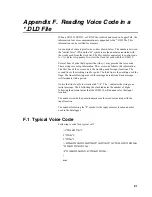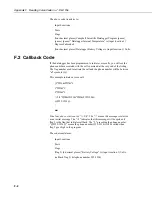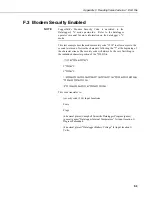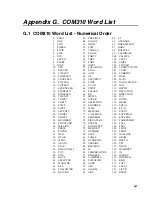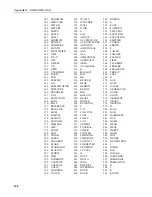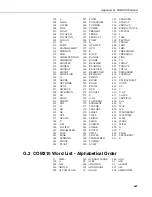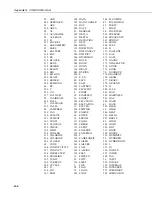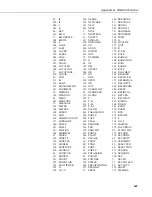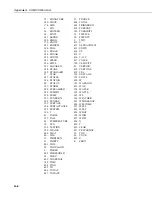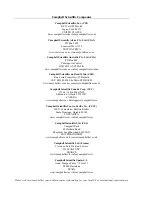
F-1
Appendix F. Reading Voice Code in a
*.DLD File
When a CR10X, CR23X, or CR510 file is edited and saved in LoggerTalk, the
information for voice communications is appended to the *.DLD file. This
information can be verified for accuracy.
An example of some typical voice code is shown below. The numbers between
the "smiley faces" (
☺
) and the "&" symbols are the numbers associated with
the words used from the word list. The
☺
symbol is equivalent to control code
A (^A). Refer to Appendix G to view the word list used with the COM310.
Several lines of code that begin with a tilde (~) may precede the voice code.
These strings are setup information. The voice code follows this information.
The first line of the voice code is the wording used for input locations. The
second line is the wording used for ports. The third line is the wording used for
flags. The lines following are used for message descriptions. Each message
will terminate with a period.
Notice that line four below starts with ">\4". The > indicates the string is an
initial message. The 4 following the slash indicates the number of digits
following the decimal point that the COM310 will announce for that input
location.
The numbers inside the quotation marks are the words associated with the
input location.
The number following the "$" symbol is the input memory location number
used in the datalogger.
F.1 Typical Voice Code
Following is code for a typical call:
;|#"
☺
56&
☺
57&"#
#"
☺
53&"#
#"
☺
52&"#
>\4
☺
88&
☺
89&
☺
109&
☺
74&
☺
71&
☺
71&
☺
71&"
☺
109&
☺
135&
☺
86&
"
☺
85&$3
☺
87&
☺
122&.\
\4"
☺
109&
☺
98&
☺
191&"
☺
85&$1
☺
192&.\
|
♣♣
Содержание COM310
Страница 2: ......
Страница 36: ...This is a blank page ...
Страница 38: ...This is a blank page ...
Страница 40: ...This is a blank page ...
Страница 48: ...Appendix F Reading Voice Code in a DLD File F 4 This is a blank page ...
Страница 55: ......















